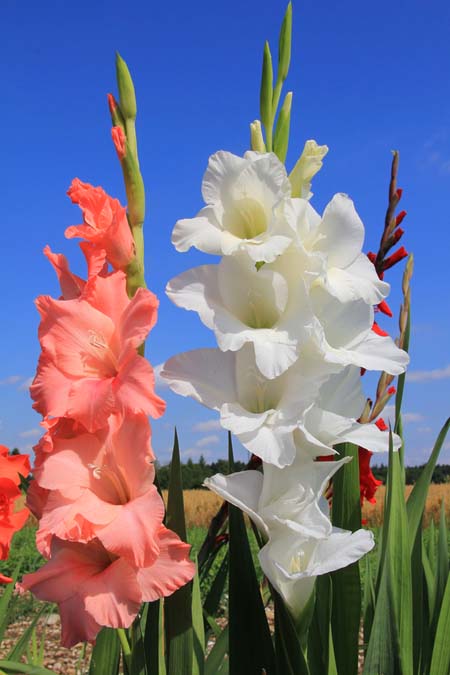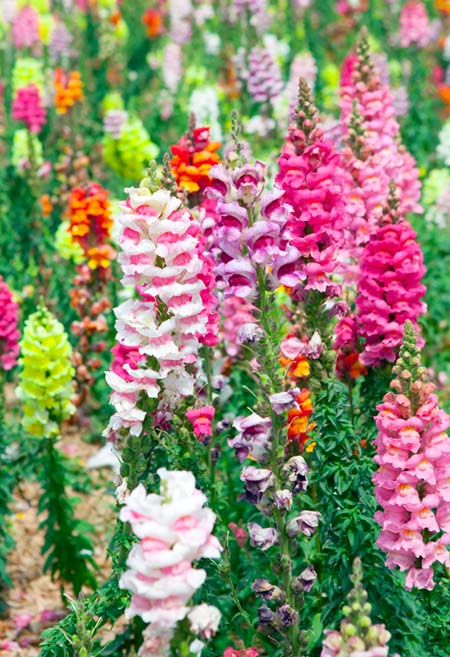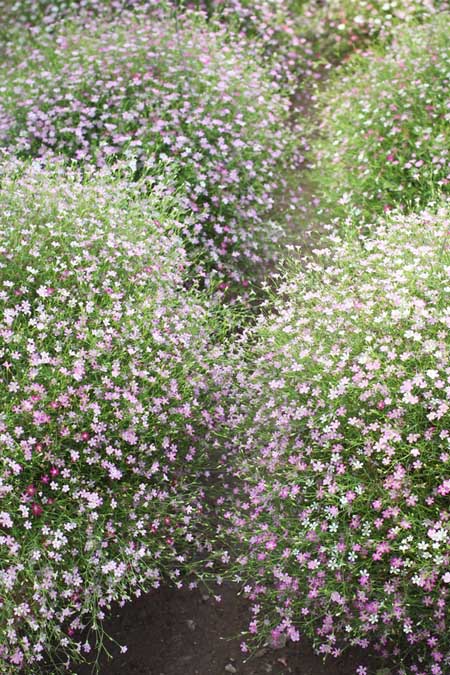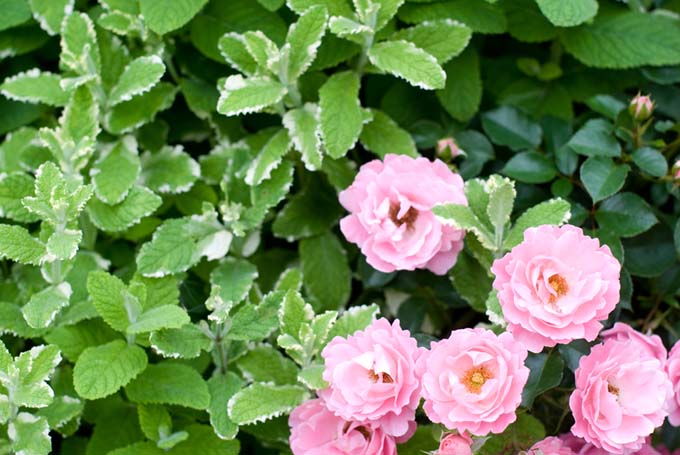Mary not only keeps fresh flowers in her own home; but she also makes up gorgeous bouquets to take to the elderly shut-ins, who live in her neighborhood. Following Mary’s lead, I have started planting more flowers to use in bouquets. You can do the same.
Choose Traditional Cut Flowers
There is nothing wrong with choosing flowers to grow in your garden that may typically be found in most florist shops. There is a reason that these flowers are used so frequently — they have gorgeous blooms, with some even being scented. One of my favorite cut flowers is the bearded iris. Irises are extremely easy to grow and actually prefer adverse conditions and neglect. Do not bury the rhizomes in the ground, or you will have beautiful foliage but no blooms. Place the rhizomes on top of the ground with just the roots coming from the bottom covered with dirt. Do not mulch. Plant in full sun and forget about them. Another great flower for sensational blooms is the gladiola. You can find these stately flowers in a wide variety of colors from pure white to a deep red washed in black. There is even a green variety available. The bulbs can be planted any time during the year. If planted in the fall, you will have blooms earlier in the spring. When planting in the spring, stagger by planting some bulbs every two weeks. This will give you a continuous flush of blooms throughout the summer. Most gardening books will tell you that gladioli should be lifted every fall. I live in a Zone 6 area and have never lifted my gladioli (to be perfectly honest, I have too many and lifting them all would be impossible and I would also probably have to build another house in which to store them). If you live further north, you might decide to lift them, allow them to dry out, and then store in a garage or basement during the winter months; however, in the South, leave them in the ground and just mulch well during the winter. Other easy-to-grow perennials for you cut flower garden could also include: oxeye daisies, Shasta daisies, coneflowers, black-eyed Susans, and dianthus (or miniature carnations). Don’t forget the annuals and biennials, though, such as sunflowers, which make absolutely gorgeous cut flowers (by the way, you can find sunflowers in not only the yellow but also in shades of red). Snapdragons are a must for many bouquets and also come in a wide variety of colors. Tip: Plant flowers with different bloom times beginning in the very early spring, so you will have cut flowers throughout the season.
Think Fall
Most people tend to think that spring and summer are the only times of the year when you can have cut flowers. There are some great fall-blooming plants, however. One of my favorites is what is commonly-called sneezeweed (despite the name, this flower will not make you sneeze). This grows on sturdy stalks (perfect for floral arrangements) and produces daisy-like blooms from yellow to a mahogany color. Another great perennial for the fall cut flower garden is the perennial sunflower (Helianthus). This produces smaller blooms than the annual variety, resembling a bright golden-yellow daisy. It tends to grow in clumps and looks almost like a bush. The blooms appear in the late summer and last through the fall until the first hard frost. Tip: Various sedums, especially the popular ‘Autumn Joy,’ produce some interesting blooms that develop deeper colors at the end of the summer into the fall. They also work well in fall floral arrangements.
Plant a Tree
Many trees produce great blooms, especially in the spring, that can be used in your floral arrangements. The dogwood springs instantly to mind. I also have an ornamental peach tree in my yard that produces the deepest, hottest pink blooms I have ever seen. Other trees for great spring blooms include: star magnolia, saucer magnolia, and cherry. Tip: A weeping cherry tree will look gorgeous in your landscape; however, it does better in warmer climates; i.e., Zones 4-8. In colder climates, consider growing it as a container plant, which can be brought indoors during the winter. Don’t forget to lightly prune these trees (and shrubs) in early spring to maximize the penetration of sunlight to increase the blooms and showy displays.
Shrubs Have Flowers, Too
In my area of the South, a forsythia bush is a must in any landscape. The yellow flowers that cover the arching stalks before any foliage appears is one of the first signs of spring. They also work extremely well in floral arrangements. There are some other great shrubs for cut flower arrangements, too. That butterfly bush you planted, for example, will not only attract butterflies but will also add interest to any bouquet. Hydrangeas can stand alone in a cut flower arrangement, plus they make great dried flowers. You can, of course, never go wrong with a rose bush or two. Some, such as ‘Mr. Lincoln,’ produce deep red, long-stemmed roses that look as if you paid a fortune for them at your local florist shop. However, even the easy-grow, easy-care Knockout Roses produces a plethora of blooms that can be added to any bouquet. Tip: Many shrubs, such as barberries and hollies, produce colorful berries in the late summer and fall, which can be added to your arrangements.
Go Green
Almost every floral arrangement needs some greenery. Believe it or not, baby’s breath, a staple for almost any floral arrangement, is very easy to grow. You should also consider adding a shade or woodland garden filled with various types of ferns, whose fronds can be added to your arrangements. Vines can work well, too. I really like to use vinca, for instance, in some of my arrangements. Tip: My absolute favorite “green” plant to use in bouquets is mint. Look for different varieties of mint, too, such as apple, chocolate, citrus, ginger, lime, mountain, and pineapple, as well as the ever-popular peppermint and spearmint. Each mint has different shapes and colors of foliage, with some, such as pineapple mint, having variegated leaves. Not only do these mints look great in arrangements, they will bring a good scent into your home and work better than any air freshener you could ever buy Grow your mint in containers if you do not want it taking over your yard. Just cut back at the end of the season and leave the container outside. The mint will return the next year. Most of us who love to garden enjoy bringing that garden indoors, too. There is no better way to do that than with cut flowers. Do you have any tips or ideas on how to create a cut-flower garden? Let us and the other readers know below and don’t forgot to ask any questions that you may have! © Ask the Experts, LLC. ALL RIGHTS RESERVED. See our TOS for more details. Uncredited photos: Shutterstock.











